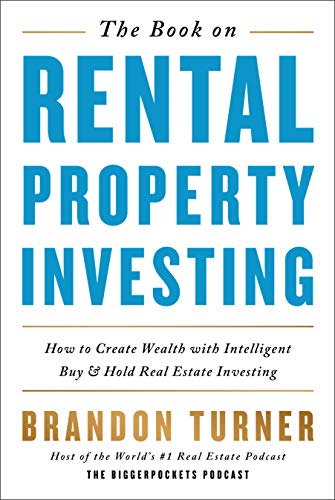If you are like me, I suspect you’ve heard a good number of gurus, or even seasoned, well-meaning investors, give the following advice in some form or fashion:
“Systems and policies are essential. If you want a business that works, you need to have systems and policies. You need to have those systems and policies, and you need to follow those systems and policies because systems and policies are absolutely essential to have and follow. Systems and policies!”
While it is certainly true that systems and policies are extremely important as I will elaborate on further shortly. Of course, just saying that isn’t particularly helpful. The “how” part is often missing, unfortunately. So, in this article, I will at least sketch out an outline of how to approach building systems and policies for real estate investors.
Why Systems and Policies Are So Important
First and foremost, the reason systems and policies are so important is because it’s a massive waste of time and energy to simply reinvent the wheel over and over again. Indeed, even the simple act of making decisions can be exhausting, and so if there is a solution ready to go for a given problem (i.e. a system or a policy), you can execute that solution with little thought and devote your mental energy to something else.
Systems also make it easier to delegate tasks, as employees and contractors won’t have to continually ask for directions. They also allow you to maintain quality control and standardize outcomes throughout the various parts of your business. Furthermore, they make it easier to stay on the right side of the law as treating someone (particularly a prospective or actual tenant) differently than another one could amount to a violation of Fair Housing.
But the most important reason for systems and policies, at least in this author’s humble opinion, is that they lay the groundwork to scale your business. It’s important to remember scaling is not growth. Instead, scaling is what facilitates growth. Investopedia defines it as follows,
“Scalability refers to the ability of an organization (or a system, such as a computer network) to perform well under an increased or expanding workload. A system that scales well will be able to maintain or increase its level of performance even as it is tested by larger and larger operational demands.”
Growth for the sake of growth is the philosophy of cancer, which, left unabated, will eventually kill its host (the business). Only through scaling (which relies on systems and policies) can the foundation be laid to “maintain or increase” the “level of performance even as it is tested by larger and larger operational demands.”
Only through scaling can you truly and sustainably grow a business. And even if you don’t want to grow that much, systems and policies will make your life a whole lot easier, shrink your liability and increase your profits.
The Key Point To Remember
I can’t think of anyone who has actually said this, but I do think there is an underlying assumption that many entrepreneurs believe you build your systems, and then you build your business. Or perhaps, you start off by building your business by going from one whim to the next, and then you realize you need systems, so you add those, and then you go back to building your business.
If I could ensure that this article accomplishes one thing, it would be to permanently remove this idea from your mind.
Business does not work in such a sequential manner. Instead, you should be building your systems and policies in lockstep with your business. It’s an iterative and never-ending process. As you expand your business, you should be expanding and updating your systems and policies. It never ends. Don’t expect it to.
Learning and Borrowing From Others
Of course, that doesn’t mean you need to start from scratch and feel your way through the dark to only learn from hard-fought (and expensive) experience.
There are plenty of good sources to learn from, including here at BiggerPockets. You should be regularly reading articles (on real estate and business in general), reading books, listening to podcasts like the BiggerPockets Real Estate podcast, and attending meetups and conferences. You should definitely be involved at your local Real Estate Investors Association or BiggerPockets meetup groups and ask seasoned investors about their various systems. Trust me, people love to talk about themselves. They’ll open up.
There are also four books, in particular, I would recommend reading when it comes to systems and policies. Any business owner should read through these:
The E-Myth Revisited by Michael Gerber
This book outlines the importance of thinking of your business like a franchise owner would, creating the policies that could be handed to someone else in another market to replicate.
The Checklist Manifesto by Atul Gawande
Gawande highlights the incredible improvement all sorts of organizations have made by simply having and following checklists for recurrent tasks. You should definitely start making these. We have developed checklists for creating scopes of work, screening residents, moveouts and deposit disposition, analyzing properties, due diligence, and financing properties, etc. Having these and following them dramatically reduces mistakes and oversights.
Traction by Gino Wickman
Wickman goes over creating an EOS (Entrepreneurial Operating System) that covers every part of your business and then hones and streamlines them as best as possible.
Scaling Up by Verne Harnish
Harnish might as well take the torch from where Wickman leaves off when it comes to scaling. He particularly highlights the importance of creating key performance indicators (KPIs) to monitor and improve performance throughout your company.
As a bonus, I would also add Getting Things Done by Gary Allen to systematize your own life.
Of course, if you are a new investor, you don’t need to read all of these before you get started. But I would definitely get on reading them as soon as possible.
Laying the Groundwork
As soon as you can, you want to start building systems, even if that’s before you get started. (Although you should not use a lack of systems as an excuse to procrastinate, again, building systems is a never-ending process.)
You should start by identifying your core processes. As Gino Wickman notes in Traction,
“It’s surprising how productive this step is. This exercise creates clarity of thought that is then put down in black and white…just by calling your processes by a consistent name, you reduce complexity and increase efficiency in the organization.”
So, for example, in our business, we have the following core processes. Yours will likely be a bit different, but this should make it clear what you are aiming for.
- Acquisition
- Financing (private loans upfront)
- Refinancing (bank loans on the back end)
- Accounting
- Rehab
- Turnover
- Property Management
- Maintenance
- Human Resources (hiring, firing, etc.)
We have then blocked these into several departments. So, I oversee acquisition and refinancing. My brother oversees human resources and assists in acquisition, and my dad is in charge of finding private lenders (financing). Thus, in our main office, we have four other departments that report to us:
- Property management
- Maintenance
- Rehab and Turnover
- Accounting
I don’t have the space here to go over each component of each department, so we’ll hyperfocus on one aspect to give a general idea. In this case, we’ll look at how a typical turnover is handled through the property management and rehab departments.
Our process is as follows, with the department in charge noted in parenthesis.
- Visit the property and evaluate condition and damages (Rehab)
- Create a scope of work for repairs during the same visit (Rehab)
- Do a deposit disposition based on damages noted (Management)
- Send that scope of work to one or more contractors (Rehab)
- Evaluate the bids and make a decision (Rehab)
- Verify work is completed and take marketing pictures (Rehab)
- List property (Management)
This process requires several checklists and policies embedded within it. For example, we have a scope of work template in Excel for writing up scopes. We have a bid template in Smartsheet we send out to contractors. We have a deposit disposition template as well as a master availability list that shows everyone in the organization where things are at as the property proceeds from the management department to the rehab department and back.
Some of these templates are available free of charge. BiggerPockets itself has a long list of landlord forms, including applications and leases you can get for free. If you are a real estate agent, your brokerage and the MLS should also have such forms.
Join the community
Ready to succeed in real estate investing? Create a free BiggerPockets account to learn about investment strategies; ask questions and get answers from our community of +2 million members; connect with investor-friendly agents; and so much more.
As you standardize your processes, you should also standardize your materials. Use the same paint colors (or just a few), vinyl, countertops, appliances, etc., for your rehabs and turnovers. This will make it simpler to acquire and replace these items and also make it more likely you can simply make repairs or do a touch-up rather than a full replacement.
Now, this probably sounds like a lot. It is. You may be just starting, and the idea of having departments could sound ludicrous to you. That’s completely understandable. It was how I would have felt not too long ago. Remember, building systems is an iterative process. Build your systems for you in the meantime, and soon enough, you will be hiring others who you will want to make sure to follow those very same systems. Trust me, you will need to be continuously building and changing your systems and policies as you grow.
Indeed, we have a whole smorgasbord of old Google sheets and Word documents in what we refer to as the “Google Docs Graveyard” meandering about the cyberspace. There will be plenty of false starts and curveballs no matter how well laid your plans are.
The Iterative Process of Building Systems and Making Policies
Again, there’s only so much you can do upfront. As you go, you will run into all sorts of problems that you hadn’t thought of nor planned for. These unique problems, however, are great opportunities to systematize your business.
Indeed, with each new decision you make, you should attempt to create a system or policy out of that. Don’t just fly by the seat of your pants as problems get thrown at you. Yes, it takes more time in the beginning to systematize and/or create policies. But this is a Quadrant II activity (important but not urgent), as Stephen Covey discussed in his classic book The Seven Habits of Highly Effective People. These are the tasks that reduce the amount of time you need to spend on such issues going forward.
These Quadrant II tasks “maintain or increase” the “level of performance even as [your company] is tested by larger and larger operational demands.”
These Quadrant II tasks are the ones you need to prioritize.
To give you an idea of how this works, here are a few examples we have had to deal with and the solution we have come up with:
Problem 1: Cockroach infestation at a house three weeks after a tenant moves in.
Policy Solution: If infestation is within the first month of tenancy, it’s on us (they were likely there when the tenants moved in), afterwards, the cost is on the tenant.
Problem 2: Tenant constantly pays late, clogging up management resources.
Policy: Allow for one payment plan per year. Afterward, an eviction notice will be filed, and the tenant will either need to pay the whole balance or set up a time to leave.
Problem 3: A maintenance order takes way too long, and it was our fault.
Policy: In such cases (when it’s not so egregious, we would consider a rent discount), we offer a gift card to their favorite restaurant (which we ask for when they sign the lease) to smooth things over.
Of course, not everything can be systematized or made into a policy. On a recent portfolio purchase, a tenant gave notice to leave to the seller while we were under contract. Their lease, however, went for another six months. The seller had been soft about enforcing lease terms, so the tenant thought it would be fine. And they just got a house under contract to buy and couldn’t afford both the mortgage and the lease. In this case, we asked the seller to prepay two months of their rent, and we would call it good and let the tenant out of their lease. He agreed.
You can’t really create a policy for such a specific situation, but you can for many. And you can create broad outlines of how to respond to really unique circumstances (i.e. if, while under contract, the seller wants to let a tenant out of their lease, we expect to be compensated for it). So, while it’s impossible to cover every scenario, and you certainly need to leave room for flexibility when it comes to many decisions, you can still systematize and make policies for a lot of ground.
And that will go a long way to scale your business and facilitate future growth (and continued sanity).
Key Performance Indicators
As you go, you will want to start developing KPIs for each major area of your business. Broad indicators for your company are pretty simple and should include things like:
- Gross Income
- Net Income (after operating expenses)
- Cash Flow (after debt service)
- Change in Income Year over Year
- Occupancy Rate
- Delinquency Rate
- Units Bought this year
But these indicators are very broad and don’t tell you a lot about why things are the way they are. Thereby, you also want to nail down KPIs for managers, or in the high likelihood that you don’t have managers, departments, or areas of your business.
While it’s true that you may not know whether the number you get with any given KPI is good or bad, you know what’s better and what’s worse. So you know which direction things are going and also have something to aim for, which clarifies your (or your manager’s) goals.
Here are some examples that we track for different departments:
Acquisition
- Properties Acquired
- Units Acquired
- Average All-in Price per Property
- Average ARV
- Rehab Estimate
- Rehab Actual/Rehab Estimate
Turnover
- Total Rolling Days of All Properties in Turnover (at end of the month)
- Average Days from Possession to a Finished Scope (for month)
- Average Days from a Finished Scope to Market Ready (for month)
- Projects Completed that Month
- Average Cost of Turnover
Property Management
- Deposits in Month
- Deposits Minus Moveouts
- Percent of Potential Rent Collected (i.e., delinquency)
- Lease Renewal Percentage
- Occupancy Percentage
- Average Rent Increase
- Total Rolling Days of Properties Available for Lease on Market (at end of the month)
Maintenance
- Closed Work Orders (in month)
- Work Orders Outstanding/Closed Work Orders
- Average Time to Complete Work Order (in that month)
- Number of Work Orders that took Longer than 48 Business Hours to Visit
- Call Back Percentage
Those are, of course, just what we do. Yours don’t have to be the same. But they do give you a good idea of how things are going. And while monthly anomalies shouldn’t be surprising (particularly with things like “Average Cost of Turnover”), these aberrations should work themselves out over the long run and give you a good idea of how things are going.
And if you do have managers, they are a great way to evaluate their job performance without micromanaging or blindly trusting them.
One last note here, in order to track your KPIs effectively, you need to have quality accounting. In addition, in order to sell at top prices and get banks to lend to you or just know whether you’re solvent, it’s critical to have your accounting in order. This is not something to skimp on. Make accounting a priority and either learn accounting or, better yet, outsource or hire someone capable of doing it.
I can’t tell you how many times I’ve seen small investors selling a property with horrible accounting. Such a state of affairs not only reduces the value of their asset but it makes it all but impossible to scale.
Conclusion
Systems and policies are essential for scaling, and scaling is essential for growth. But again, the biggest takeaway here is not just that systems and policies are good and necessary, it’s that building them is an iterative process that never ends.
Don’t be scared or overwhelmed by the thought of them. Every entrepreneur starts with zero systems in the same way every real estate investor starts with zero properties. But in the same way, you don’t intend to stay at zero properties, you should intend to grow your systems alongside your company. Back forth, around and around, forever and ever.
Find financial freedom through rentals
If you’re considering using rental properties to build wealth, this book is a must-read. With nearly 400 pages of in-depth advice for building wealth through rental properties, The Book on Rental Property Investing imparts the practical and exciting strategies that investors use to build cash flow and wealth.






